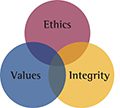Water Funds Diverted to WAV Project

“I am not a crook”[1]
—Richard Nixon

“There are no direct (City) tax dollars in the WAV” —Bill Fulton, former mayor (5-13-2011)
THE WAV REVISITED
In August, 2011 we suggested that you take a walk and visit the WAV, located at 175 South Ventura Avenue, Ventura. If not, take a virtual tour by clicking here.
This is a subsidized housing project consisting of 54 residential units for low income artists, 15 units for the homeless, 13 market rate condominiums and 6,000 square feet of commercial space. The projected cost was $57,000,000, but when it was completed in October, 2009, the real cost was $65,000,000 — all tax payer money in one form or another.

Chase holds the note on Ventura’s WAV Condos. The city stands to lose $2.0 million if the WAV condos do not sell by 2016
The 13 condominiums, at the corner of Thompson Boulevard and the Avenue, did not sell and the commercial space along Ventura Avenue remains vacant to this date. The condos and the commercial side of this development failed. Last year, to avoid a foreclosure by CHASE of their senior construction loan of $4,000,000 the Ventura Redevelopment Agency, which holds a promissory note of $2,000,000, secured by a second trust deed on the condo portion of this project, received a reprieve and dodged a bullet by obtaining a 5-year extension of the CHASE loan. If the condominiums do not sell by 2016 the probability is that this $2,000,000 will be lost. In the meantime the 13 condos have been leased. It is unknown if these leases are producing a profit, or not, since operating statements have not been provided by the company operating the units.
Our former Mayor, Bill Fulton, at every opportunity proudly announced that this project would “produce 25,000 visitors a year and would stimulate the local economy, resulting in $75,000,000 in new investments”. We do not know the basis for his prediction, but there is scant evidence, if any, to support such prognostication. As for the sources of funds here is what he said about the use of general fund tax money at a public event:
“…city invested a mere $1.5 million in affordable housing set-aside funds–funds that could only be used for affordable housing (there are no direct tax dollars in the WĀV).”
—Former Mayor Bill Fulton, As quoted by Liveworkworld. com (5-13-2011)
When Res Publica suggested that money from the general fund of the City of Ventura was used on this project the Mayor stridently asserted that the only money used to build this project was from the Federal Government, the State of California and the Ventura Redevelopment Agency. The City Manager, noted for his numerous blogs to “clarify matters” or to achieve “transparency”, was silent. Well, it turns out that City funds were in fact used to the tune of $2,581,858.
First there is the $2,000,000 referenced above. One-half of that money came from the RDA; however the other $1,000,000 was taken from the Capital Improvement Fund of the Water Department, transferred to the Public Art Fund then loaned to the RDA to make up the $2,000,000 loan. That promissory note says – “Holder (the City) does not currently need the funds which are unencumbered. The Loan proceeds will be used by the Borrower (RDA) to help facilitate the construction of the Working Artists Ventura (“WAV”) development in the City of Ventura”.
The city Council approved this loan on February 4, 2008. The loan was to have been repaid and placed back in the Water Department funds on January 26, 2010. That did not happen. What the Council did do however is extend the due date twice with the result that the loan is not due to be paid back until March 1, 2016.

City Councilmembers approving money for WAV building conflicts with their role on the RDA.
This was a major mistake. The folks on the City Council are the same people that act as the RDA. This transaction was not arms length and drips of conflict of interest. Who was watching out for the interests of all of the citizens of this community in making the loan and/or obtaining payment of this loan? It certainly wasn’t the City Council because they, acting as the RDA wanted to claim fame and create their dream public housing (art?) project. Now it is too late to obtain payment. The RDA has no money, it is defunct and all we can do now is list this loan on a long list of other RDA loans that the State of California may or may not pay someday. Just remember this transaction when the City Council asks to increase your water rates claiming that “we” do not have enough money.
Another twist in this Byzantine financing scheme centers on the Planning Department and Building and Safety. When a builder or homeowner wants to build anything they must obtain permits, which are only issued after scheduled fees are paid for the project. These permit fees are used to pay for the salaries and benefits of the personnel in these two departments, and are a major budget line item. In the case of the WAV however the City Council, on August 2, 2007, voted to defer payment of $1,581,858 in permit fees to be paid over a period of 55 years bearing interest of 3%. Having foolishly given public funds to accomplish their pet project it is little wonder that the City Council found it necessary in the last four years to impose greater and greater planning fees and costs on anyone who wants to develop or build in this City.
USE OF PUBLIC WORKS MONEY, WATER RATES, “ART”AND WAV PROJECT
[“How many legs does a dog have if you call its tail a leg?—A. Lincoln]

Using public works money for the WAV building violates Prop 218
Government Code § 5499.7 [Proposition 218] requires that in providing water and wastewater services to the citizens of any community the amount billed for those services may not exceed the funds required to provide the service, and that the fee may not exceed the proportional cost of the service provided to the individual owner upon which the fees is imposed.
Seems clear.
During a series of hearings before a Citizens Rate Advisory Committee, conducted between October 12, 2011 and January 25, 2012, to consider a City staff proposal to raise water and waste water rates to fund $265,000,000 in new projects over a ten (10) year period, what was discovered is that the City staff, under the direction of the City Manger, interprets Proposition 218 in a most liberal manner.
First, there is the $1,000,000 taken from the Water Department and channeled through the RDA. This money came from the homeowners and property owners who pay their water bills and waste water bills. That should not have happened and is ostensibly contrary to the provisions of the Government Code. We can thank the Howard Jarvis Taxpayer Association for having obtained a court ruling on what this money (utility charges) can and cannot be used for, and public housing projects are not one of them.
“…the fee or charge revenues may not exceed what it costs to provide fee or charge services…the key is that the revenues derived from the fee or charge are required to provide the service, and may be used only for the service…”
—Howard Jarvis Taxpayers Ass’n v. City of Roseville (2002) 97 Cal. App. 4th 637, 647-648.
This committee next learned that not only had this loan been made to the RDA, but that the City Council had taken the position that the water and waste water funds were fair game for any “art project”, and that they were entitled to extract 2% of any money used for capital projects to provide the citizens with water and waste water services.
As of January 2012 the accounting department set aside (extracted) $3,145,620 for the Public Art Program from the water and waste water money collected through water bills. They reported the following:
VENTURA WATER
PUBLIC ART PROGRAM STATUS JANUARY 2012
| Budget for Administration | $ 432,207.94 |
| Budget for Art Projects | $2,713,413.03 |
| Total Sums set Aside for Art | $3,145,620.97 |
| Sums spent for Administration | $ 432,207.94 |
| Art Projects completed – spent | $ 581,351.86 |
| Total Sums spent for Art Projects | $1,013,559.80 |
| Cash in the Bank for Future Art Projects | $2,132,061.17 |
| WAV Loan – receivable | $1,000,000.00 |
The City Attorney, Ariel Calonne, provided a written opinion to the Citizens Rate Advisory Committee, that the Ventura City Charter, Section 1406, provides the legal basis for the City Council allocation of 2% of all money used for water projects to art. He further argued that “as the City’s ratemaking authority, (the Council) has determined that the public art program constitutes a reasonable cost of service for capital improvements attributable to Ventura Water”. The Citizens Advisory Rate Committee did not agree. On January 25, 2012, this citizen committee rejected the 2% for art allocation as part of any water rate increases, stating “It is time to rethink all public funding and priorities. This is an opportunity to effect some needed change”.
On Monday, February 27, 2012, at 6 P.M. the City Council will take up the matter of increasing water and waste water rates.
Editors Comments:

Diverting funds from public works for housing borders on unethical
A plain reading of Proposition 218 and common sense dictates that water and waste water funds should not serve as the slush fund to pay city administration costs or building costs unrelated to the costs of operating our water and waste water departments. So when your water rates are increased by 30-40%, or another tax increase is placed on the ballot, remember that here is another $2,581,858, squandered.
Actions by our City Manager are not without approval and acceptance by our City Council. If our elected representatives lack the understanding, the capacity to ask the deeper questions or political will to stop these types of actions, we need to make fundamental changes.
Editors:
B. Alviani K. Corse T. Cook
J. Tingstrom R. Mccord S. Doll
[1] Nixon denied that any of his re-election campaign funds were used to pay the Watergate burglars, or that a slush fund has been created for this purpose. In July 1973 Nixon admitted he had attempted to cover up the break-in to hide the fact that funds were diverted from one source to another for an illegal use.
For more information like this, subscribe to our newsletter, Res Publica. Click here to enter your name and email address.

